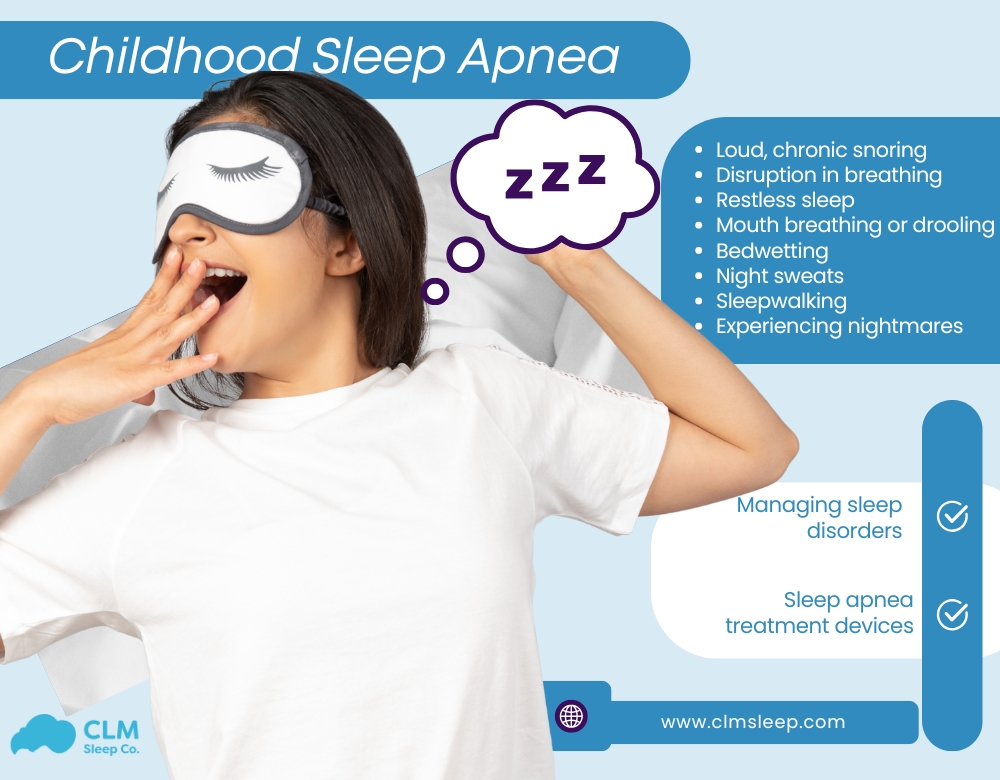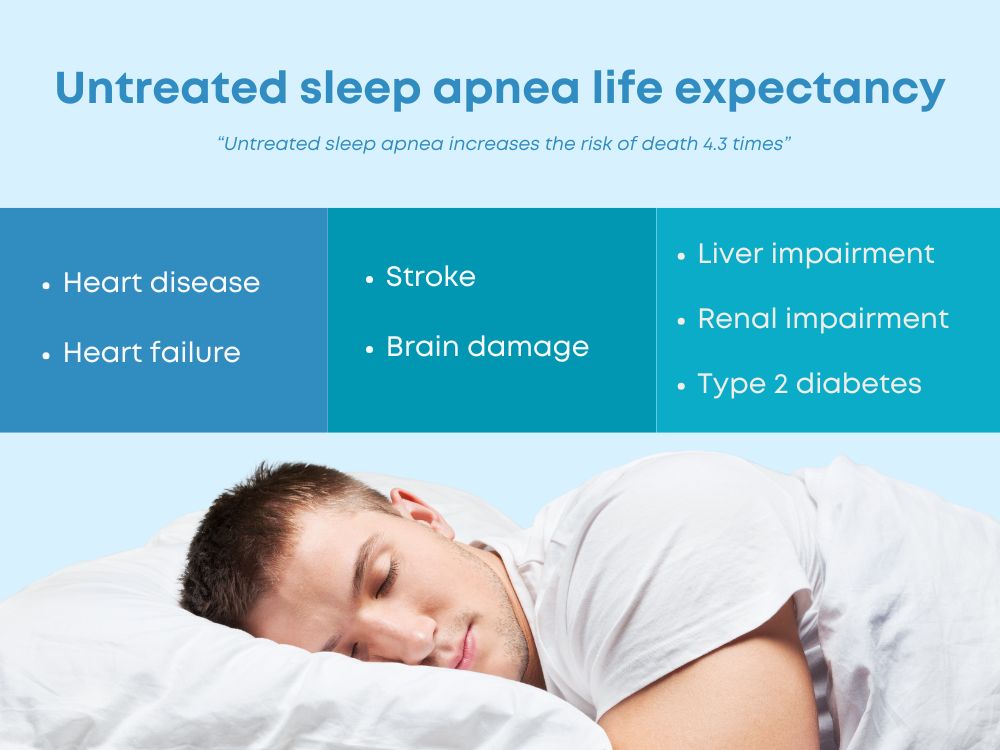Children with sleep apnea have difficulty in breathing while sleeping. This condition usually occurs when the upper airway muscles relax during sleep, resulting in a partial or complete blockage due to enlarged tonsils and adenoids. Other causes may include obesity, chronic allergies, muscular weakness, or low muscle tone by virtue of medical conditions such as Down syndrome or Pierre Robin syndrome, as well as other structural abnormalities in the airway or facial structure. About two to three out of every 100 children will experience some form of obstructive sleep apnea. So, what is childhood sleep apnea? Let’s find out with CLM Sleep in the article below.
Childhood Sleep Apnea Overview
What is childhood sleep apnea? Pediatric sleep apnea is a sleep disorder that causes temporary disruption in a child’s breathing, typically due to partial or complete obstruction of the upper airway. These interruptions can result in restless sleep and daytime fatigue, and, if left untreated, may impact a child’s growth, behavior, and overall health.
In contrast to adults, children do not typically present with excessive daytime sleepiness when they have sleep apnea. Behavioral problems can be seen instead. While obesity tends to be the most common primary cause in adults, in children, it is more frequently connected with oversized tonsils and adenoids. Adenoids are small tissues in the back of the nose, and tonsils are oval-shaped masses at the rear of the throat.
An insight into sleep disorders, particularly among children, is of utmost importance because early detection and management can avert later associated problems and enhance the quality of life-related to the child’s development. Symptoms and especially risk factors following enlarged tonsils or chronic allergies would prompt medical establishment visits by parents seeking help, thus leading to improved health outcomes for their children.
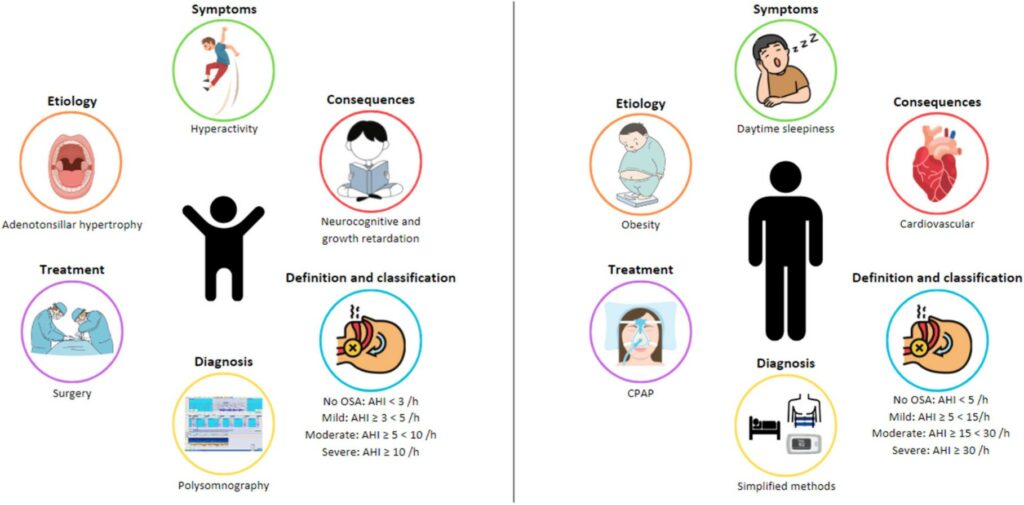
See more: Snoring in Children: Causes and Solutions
Types of Sleep Apnea in Children
There are three main types of sleep apnea in children:
Pediatric obstructive sleep apnea
Pediatric obstructive sleep apnea is the most common type, occurring when the airway is partially or completely blocked during sleep, often due to enlarged tonsils or adenoids.
Central sleep apnea in children
Central sleep apnea is less common in children and occurs when the brain temporarily fails to send the proper signals to the muscles that control breathing. This type is less common in children and may be linked to neurological conditions or developmental issues.
Complex sleep apnea syndrome
As known as Mixed or Treatment-Emergent Sleep Apnea, Complex sleep apnea is a combination of obstructive and central sleep apnea, where central apnea episodes emerge during treatment for obstructive sleep apnea.
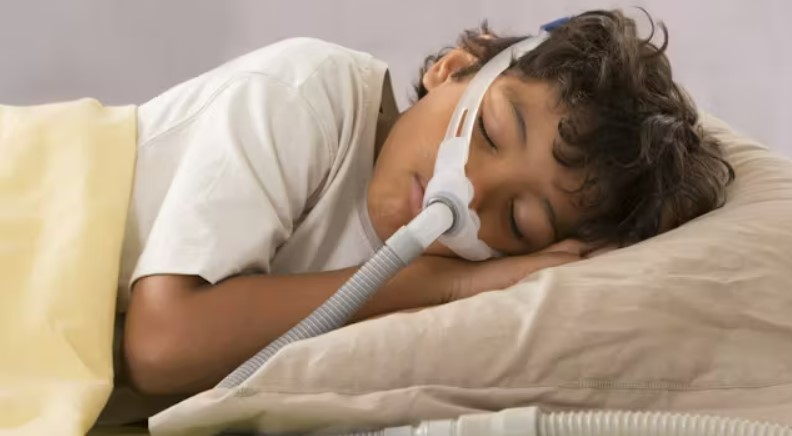
See more: Types of sleep apnea
Childhood sleep apnea symptoms
When breathing stops, oxygen levels in the body decrease and carbon dioxide levels rise. This typically triggers the brain to wake the body up to resume breathing. This reflex often happens quickly, and we usually don’t realize we’ve briefly woken up.
This phenomenon can repeat many times throughout the night in cases with obstructive sleep apnea, preventing them from reaching deeper, more restorative stages of sleep.
Signs of childhood sleep apnea during sleep include:
- Loud, chronic snoring
- Disruption in breathing followed by gasping or choking
- Restless sleep with frequent movements
- Mouth breathing or drooling
- Bedwetting (especially if the child does not have a history of this situation)
- Night sweats
- Sleepwalking or experiencing nightmares
Due to poor-quality sleep at night, children may:
- Struggle to wake up in the morning
- Have daytime sleepiness or fatigue
- Have difficulty focusing or show signs of hyperactivity
- Have morning headaches
- Develop delays in more severe cases
Recognizing these symptoms early can help parents and healthcare providers seek timely treatment, improving sleep quality and overall health in children with sleep apnea.
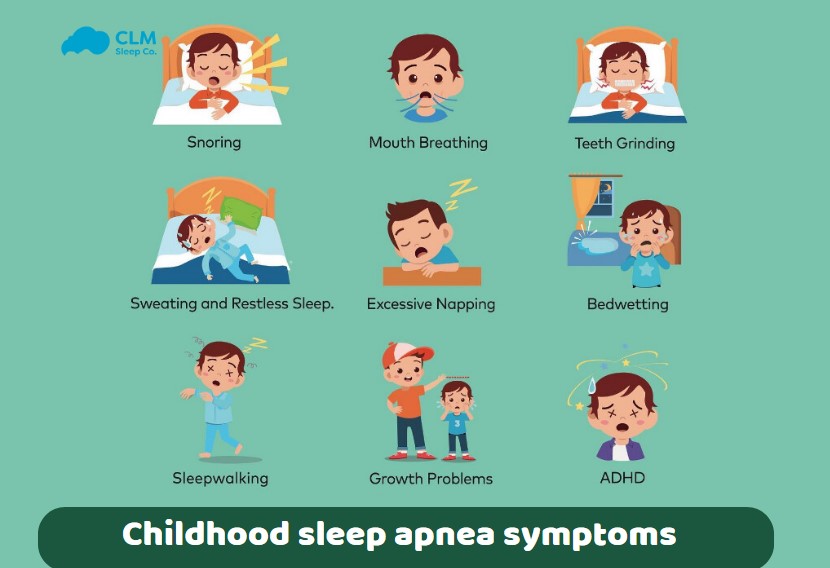
Causes and Risk Factors
Causes of sleep apnoea in the child
In adults, obesity is a common factor contributing to obstructive sleep apnea. While obesity plays a role in the disorder for some children, childhood sleep apnea is more often related to enlarged tonsils and adenoids. Other underlying factors may include congenital abnormalities related to the shape of the face or head. Neuromuscular disorders that affect muscle function due to nerve and muscle issues in the body may also contribute to obstructive sleep apnea in children.
Risk Factors
Other factors that may increase a child’s risk of developing OSA (Obstructive Sleep Apnea) include:
- Enlarged tonsils or adenoids: These are the most common reason for obstructive sleep apnea in children, as enlarged tissues can partially or completely block the airway during sleep.
- Congenital Abnormalities of the Skull or Face: Structural issues can lead to airway obstruction.
- Cerebral Palsy: Neuromuscular limitations may impact breathing control.
- Sickle Cell Disease: Higher risk due to potential airway blockages from vascular issues.
- History of Low Birth Weight: Premature birth may lead to underdeveloped airways.
- Childhood obesity and sleep apnea: Excess weight can lead to fat deposits around the airway, increasing the likelihood of airway obstruction.
- Family history of sleep apnea: A family history of sleep apnea may increase a child’s risk, suggesting a genetic predisposition.
- Certain medical conditions like Down syndrome 800: Conditions like cerebral palsy or muscular dystrophy can affect muscle control and airway stability by increasing risk due to low muscle tone and structural airway differences.
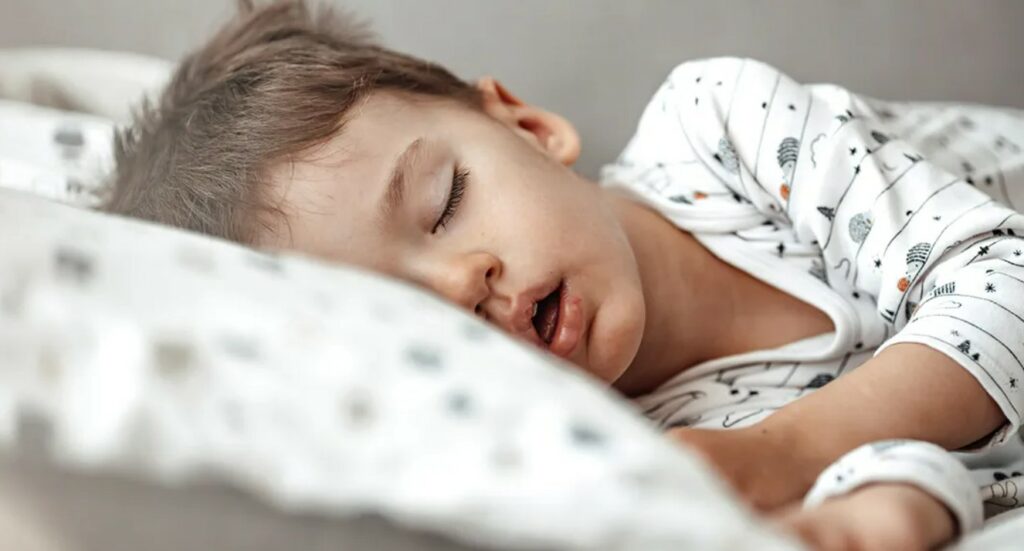
Childhood sleep apnea diagnosis
Contact to doctor if your child:
- Frequent snoring
- Restless sleep
- Falling asleep during the day
- Other signs of sleep apnea
The doctor may refer you to a medical method or recommend a sleep study to obtain an accurate diagnosis and find an appropriate treatment solution.
Sleep study childhood sleep apnea
The doctor may recommend a sleep study (polysomnography) for your child to determine if they have sleep apnea. This is a painless, non-invasive process that does not involve needles. Monitoring devices are attached to the child to track breathing patterns, oxygen levels, heart rate, and brain, eye, and muscle activity throughout sleep.
Medical history and physical examination
A thorough medical history and comprehensive physical examination are crucial for diagnosing childhood sleep apnea. The doctor will review symptoms such as snoring, daytime fatigue, and behavioral issues, along with risk factors like enlarged tonsils, adenoids, and obesity. These assessments help identify the cause and determine if further testing, such as a sleep study, is necessary to improve treatment and enhance the child’s quality of life.
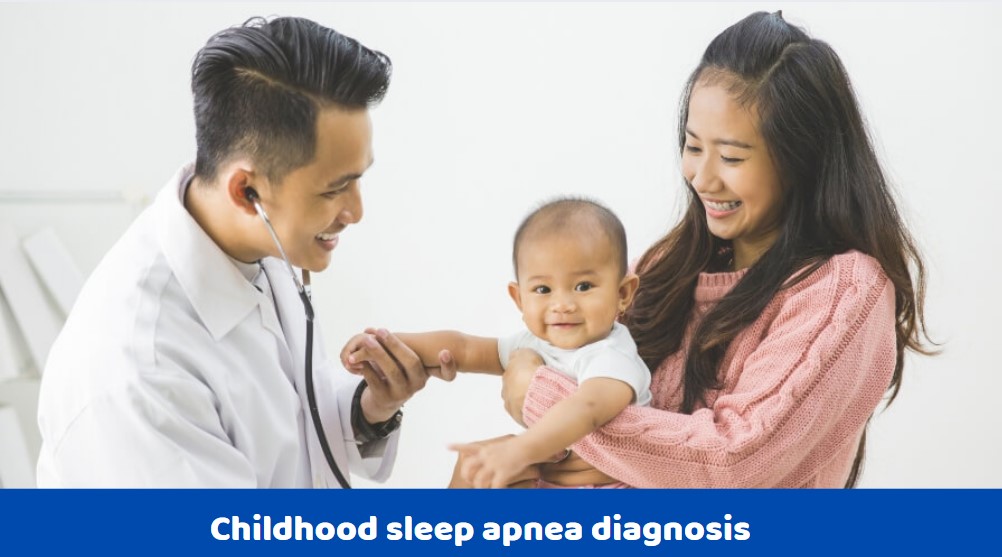
Childhood sleep apnea treatment
The treatment approach will be determined based on the cause and severity of the condition following diagnosis.
- Lifestyle changes: For mild cases, lifestyle adjustments such as maintaining a healthy weight, increasing physical activity, and establishing a regular sleep routine can help reduce symptoms and improve breathing during sleep.
- Continuous Positive Airway Pressure (CPAP) therapy: CPAP therapy uses a mask worn during sleep to deliver gentle air pressure, keeping the airway open. This method is effective for children with moderate to severe sleep apnea who are not suitable candidates for surgery.
- Surgical options: Tonsillectomy or adenoidectomy: Surgically removing the tonsils or adenoids can be an effective treatment for obstructive sleep apnea, especially when enlarged tissues are the main cause of airway obstruction.
- Dental devices or orthodontic treatments: Specialized dental devices or orthodontic treatments can help realign the jaw and expand the airway, particularly in children with structural issues contributing to sleep apnea.
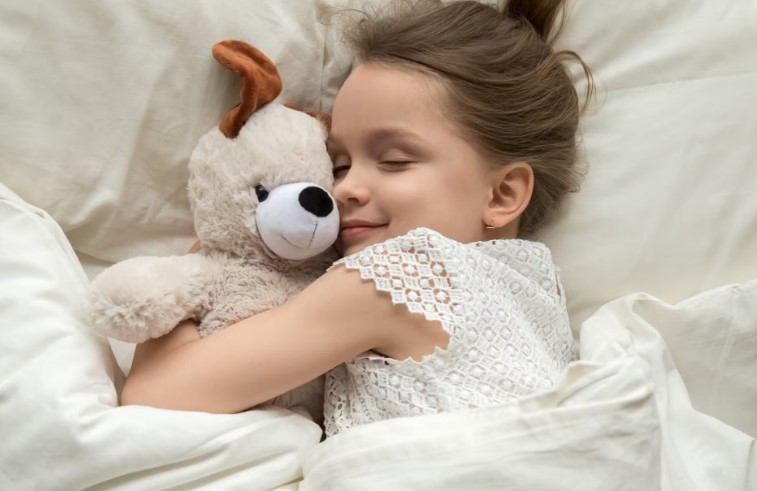
Potential Complications if Untreated
Untreated sleep apnea in children can lead to serious complications, affecting physical, emotional, and cognitive development. Without intervention, children may experience poor growth, behavioral issues, cardiovascular problems, and learning difficulties due to poor sleep and frequent oxygen deprivation. Early diagnosis and intervention are essential for supporting a child’s health and development.
Poor growth
Untreated childhood sleep apnea can disrupt growth hormone production, impacting physical development and weight due to reduced hormone release from poor sleep.
Behavioral issues
Childhood sleep apnea symptoms can cause irritability, hyperactivity, and mood changes, leading children to display ADHD-like symptoms as poor sleep affects emotional and behavioral control.
Cardiovascular problems
Untreated sleep apnea can raise cardiovascular risks, as frequent oxygen deprivation stresses the heart and blood vessels, potentially leading to high blood pressure and other heart-related issues.
Learning difficulties
Sleep apnea impairs memory, focus, and problem-solving skills, affecting academic performance as children struggle to concentrate and retain information due to inadequate sleep.
Prevention and Long-term Management
Preventing and managing childhood sleep apnea is essential for supporting overall health and quality of life. Regular check-ups, healthy sleep habits, and weight management can reduce the risk and severity of long-term effects of childhood sleep apnea, promoting better sleep and reducing potential complications.
- Regular check-ups: Routine medical check-ups are essential for early detection of sleep apnea and monitoring of risk factors like enlarged tonsils or adenoids, allowing timely intervention if symptoms arise.
- Promoting healthy sleep habits: Establishing a consistent sleep schedule, creating a calm bedtime routine, and ensuring a comfortable sleep environment can help improve sleep quality and reduce the risk of sleep apnea.
- Weight management: Maintaining a healthy weight through a balanced diet and regular exercise can decrease the likelihood of obstructive sleep apnea, as excess weight can contribute to airway obstruction.
Conclusion of the article
In summary, childhood sleep apnea is a serious condition affecting physical, cognitive, and emotional development. Early recognition, diagnosis, and intervention are key to effective management. By understanding symptoms, risk factors, and treatment options, parents can help improve their child’s quality of life and reduce health risks. With timely care, children with sleep apnea can thrive and enjoy better health.
Visit our website to learn more about managing sleep disorders and their impact on health. At CLM Sleep, we offer comprehensive diagnostic and treatment services for sleep apnea, helping you restore sleep quality and enhance your health. You can also explore other sleep improvement devices at our online store, Cpapdiscount.
